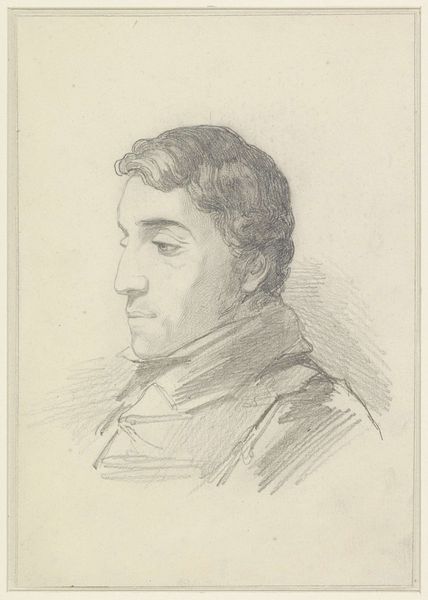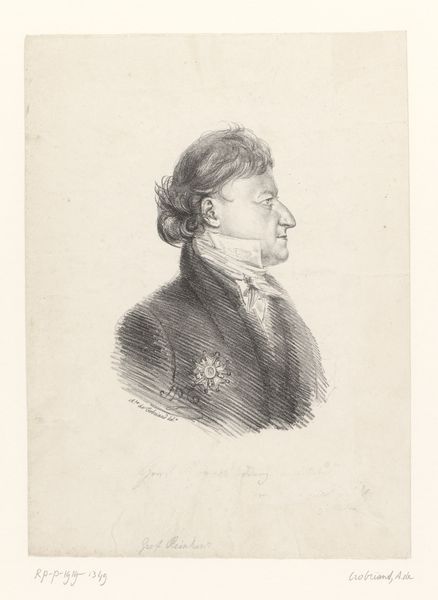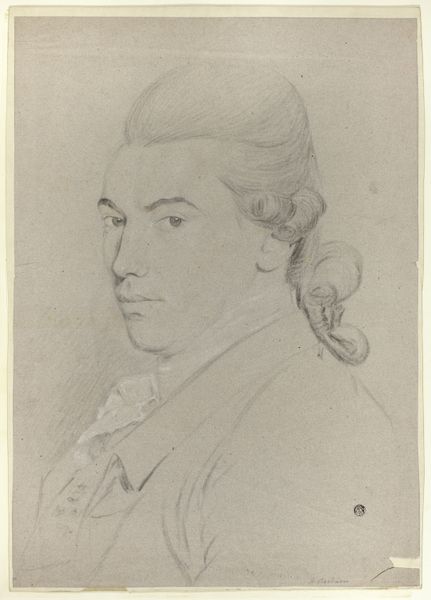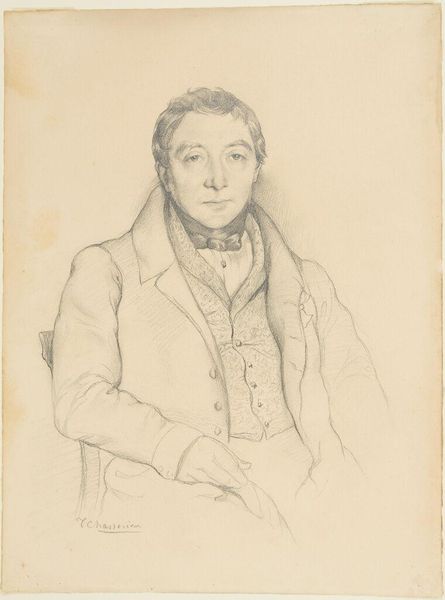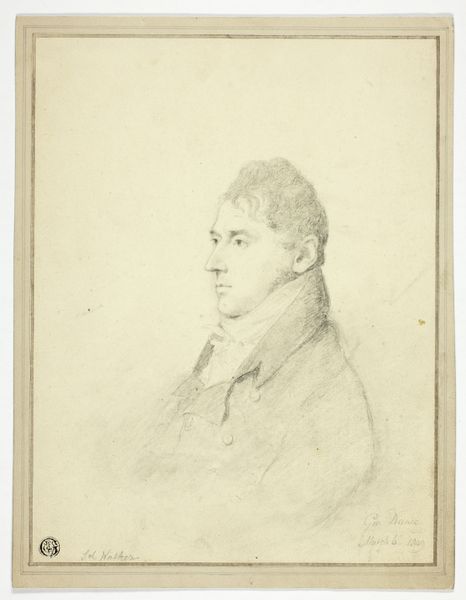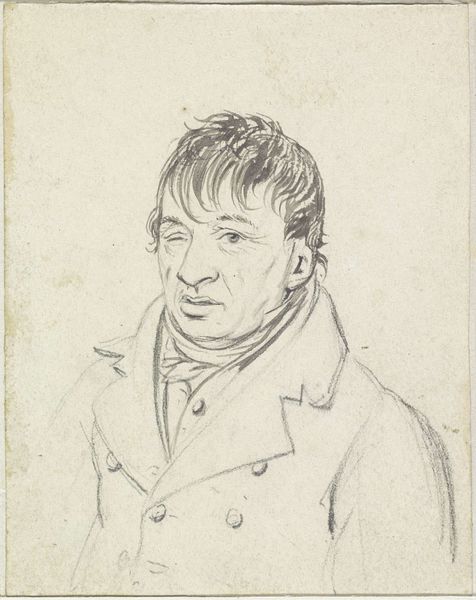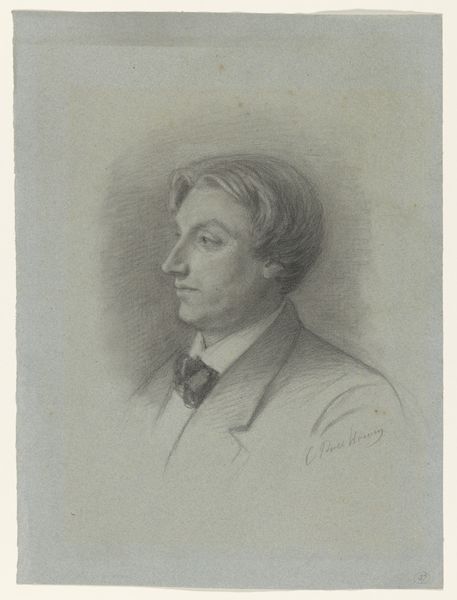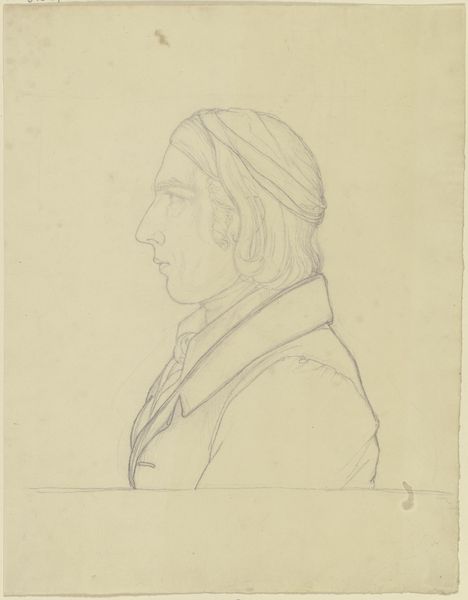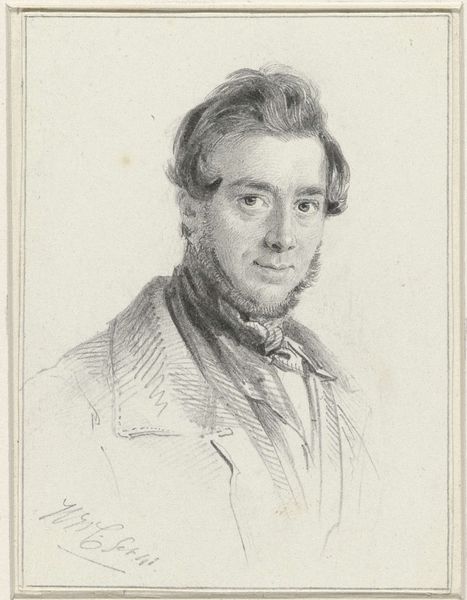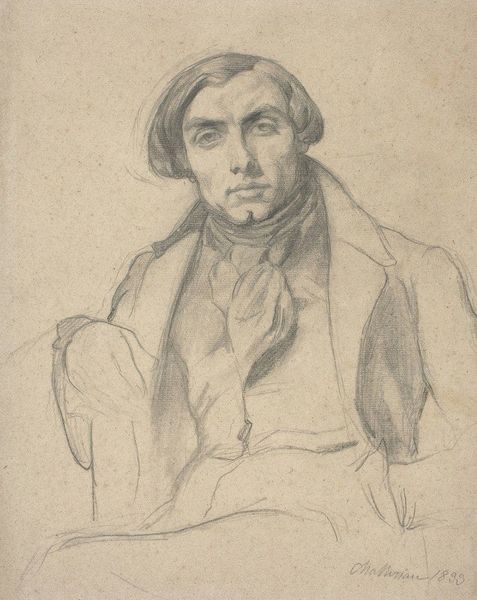
drawing, pencil, graphite
#
portrait
#
pencil drawn
#
drawing
#
amateur sketch
#
toned paper
#
facial expression drawing
#
light pencil work
#
pencil sketch
#
portrait reference
#
pencil drawing
#
pencil
#
graphite
#
portrait drawing
#
pencil work
#
realism
Dimensions: height 180 mm, width 135 mm
Copyright: Rijks Museum: Open Domain
Arnoldus Johannes Eymer created this self-portrait in pencil sometime in the first half of the 19th century. The soft gradations of light and shade give the portrait a delicate, almost intimate quality. Eymer, who lived from 1803 to 1863, was working in the Netherlands during a period of significant political and social change. The country was transitioning from a monarchy to a more democratic system, and there was a growing sense of national identity. How did these developments affect Dutch art? Well, for one thing, the Dutch art world was becoming more professionalized, with artists increasingly relying on institutions like academies and museums for training and recognition. Artists who portrayed themselves, such as Eymer here, had to strike a fine balance between self-promotion and social acceptance, with the institutions of art playing a crucial role. For a deeper understanding, one might explore the archives of Dutch art academies and exhibition records from the period. This reminds us that the meaning of art is always tied to its social and institutional context.
Comments
No comments
Be the first to comment and join the conversation on the ultimate creative platform.
